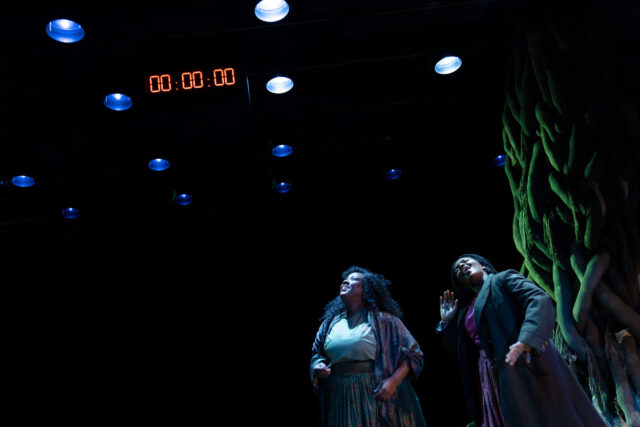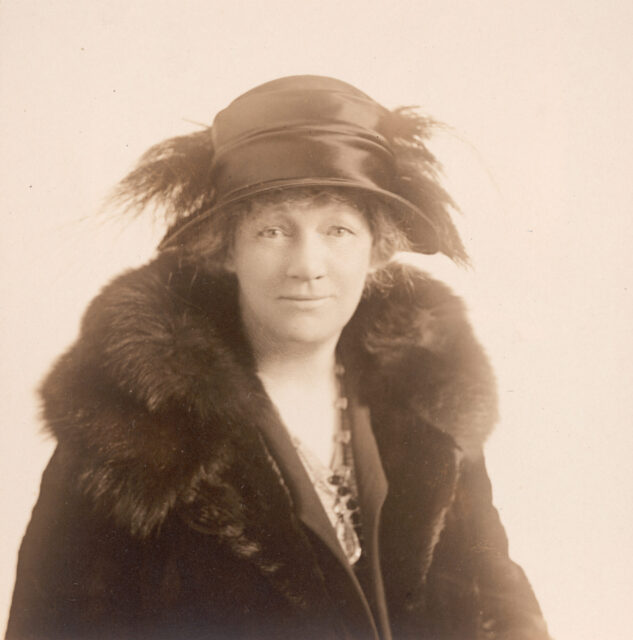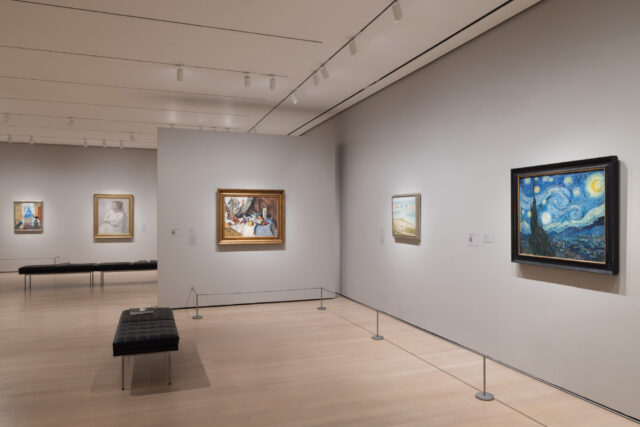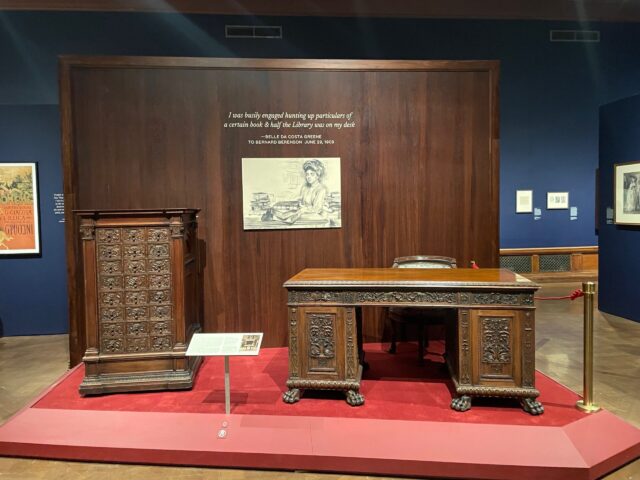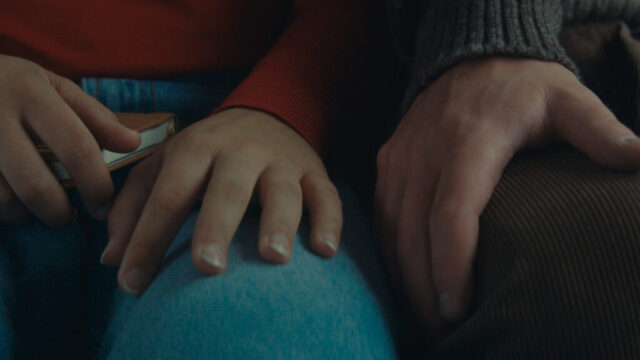
Joshua William Gelb spends three hours a night in a tiny box at Here through March 25 (photo by Maria Baranova)
[untitled miniature]
HERE Arts Center
145 Sixth Ave.
March 18-25, $27-$102 (livestream only $10), 7:00, 8:00, 9:00
here.org
theaterinquarantine.com
In January, Joshua William Gelb, who had transformed his eight-square-foot closet in the East Village into a pristine white digital stage during the pandemic, escaped the safety of his home in order to present The 7th Voyage of Egon Tichy [Redux], a staggeringly inventive hourlong multimedia play performed in a replica of his closet, accompanied by live and prerecorded video segments interacting with each other.
Gelb, whose collaborative virtual productions, dubbed Theater in Quarantine, include I Am Sending You the Sacred Face: One Brief Musical Act with Mother Teresa, Footnote for the End of Time, and Nosferatu: A 3D Symphony of Horror, now steps further into the technological avant-garde with the hybrid [untitled miniature], running through March 25 at Here. Each evening from 7:00 to 10:00, Gelb, nude and covered in white talcum powder, will perform in a white box measuring only 35″ wide by 19.5″ tall. His actions, which begin with him seemingly asleep, can be seen on an iPhone facing the box, a screen on the back of the box, three video monitors in the hallway, and a wall around the corner with nine screens that alternate between live and prerecorded scenes of Gelb in the box, sometimes bathed in yellow, pink, or other colors, along with television test patterns, the SMPTE color-bar grids that, sixty years ago, appeared on television sets after broadcasters shut down for the night — and which, if they came on today, would signal the end is near.
Audience members can relax on the vivid blue floor in the central space, sit in a chair, or walk around the room, following the show on an app that shares different views of Gelb and encourages everyone to participate in a chat that is read out loud by a female AI voice, audible to both the audience and Gelb. The only other items in the room are a red fire extinguisher and an old metal first-aid kit on the wall; after I accidentally knocked my head against it, one of the black-clad stage managers silently came over, opened it up, took out a small package that said “bandages,” and offered me a brown Tic Tac.

[untitled miniature] features a live video feed broadcast to numerous screens and online (photo by Maria Baranova)
In an Instagram post, Gelb delves into the nature of the work, explaining, “Why am I naked? . . . The naked body is the foundation of art. . . . I’m trying to see if it’s possible to find a real impression of tactility in the digital medium. I wanted to make a piece that really felt distilled down to its most essential elements, the smallest performance space possible and a human body. That shouldn’t be controversial, but try putting a naked body on the internet outside of OnlyFans and you hit a wall — algorithmic sensors, AI moderators, the corporate infrastructure that decides what is and is not acceptable. . . . Art isn’t about comfort or what’s acceptable. And artists need a digital space where they can push boundaries, even ones that make us uncomfortable.”
Gelb certainly looks uncomfortable as he wiggles, turns, squirms, and reconfigures his limbs; often, when he bumps into or purposely strikes the box, harsh, loud sounds reverberate blast out, a cacophonous symphony. At times the audience is enveloped in the much more rewarding sounds of chirping birds and a gently rushing river. Gelb occasionally lets out a grunt but is mostly quiet as he struggles inside the claustrophobic box.

Durational performance offers numerous ways to experience it (photo by Maria Baranova)
Gelb is clearly not enjoying himself, grimacing, staring out blankly, seemingly unable to get out of his predicament. Although one side of the box is open, he is trapped, in a cage he has built for himself. It’s as if he’s been sent to solitary confinement for an unnamed crime. Maybe he wakes up, wrestles with another difficult day, and goes back to bed — or perhaps has decided, once awake, to eventually stay under the covers, avoiding facing the world. He could be stuck on a social media platform on which he no longer wants to reveal himself. Or maybe he has experienced an entire lifetime in forty-five minutes, being birthed from the womb and later laid to rest in a grave.
The piece can also be taken more literally, applied to how we were all penned in at home during lockdown, terrified of leaving, spending too much time with our little electronic boxes that kept warning us of impending doom — and with which Gelb has carved out a unique and fascinating career.
At the show’s conclusion, there are no bows, no applause. Some members of the audience gingerly leave, and others stay, no one sure whether anything else is going to happen, sort of like life itself, before, during, and after a pandemic.
[Mark Rifkin is a Brooklyn-born, Manhattan-based writer and editor; you can follow him on Substack here.]


